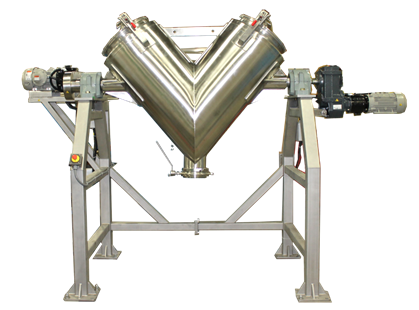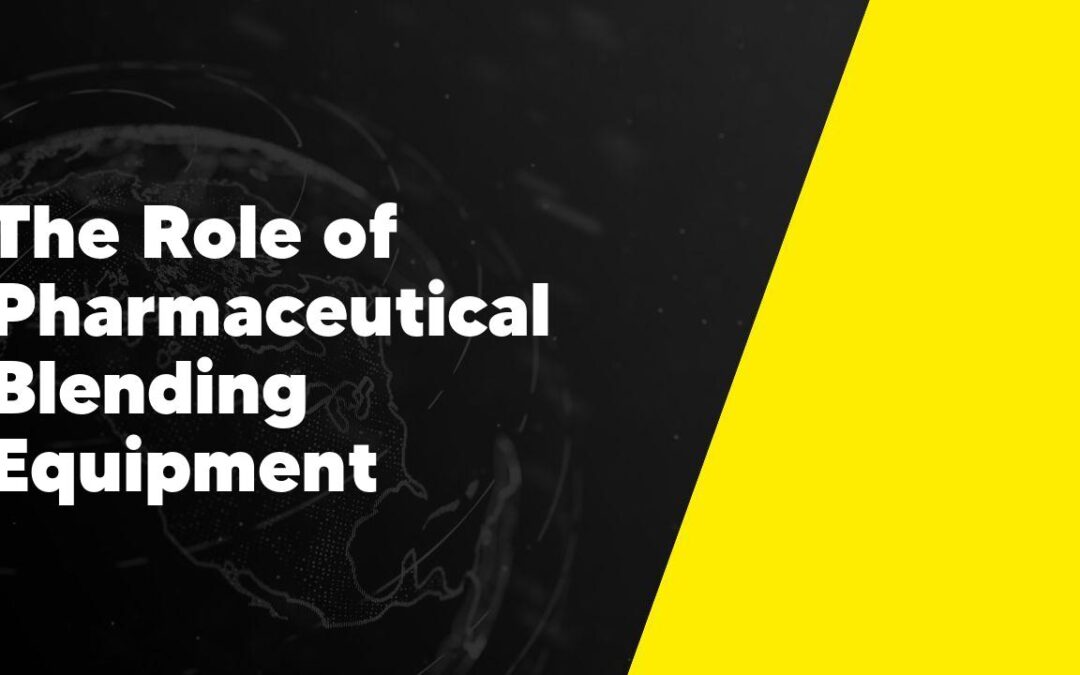Pharmaceutical blending equipment plays a crucial role in the production of medications, ensuring that all active ingredients are thoroughly mixed to achieve uniformity and consistency. This article explores the importance of pharmaceutical blending equipment in the drug manufacturing process, highlighting its functions and benefits. Additionally, it discusses the various types of blending equipment available and their specific applications in the pharmaceutical industry.
1. Introduction to Pharmaceutical Blending Equipment: An Overview
Pharmaceutical blending equipment is an essential tool in the pharmaceutical industry. It is used for mixing various ingredients to create medicines, vitamins, and supplements. As a professional in this field, I understand the importance of having reliable and efficient blending equipment. It plays a crucial role in ensuring the quality and consistency of the final product. With the advancement in technology, there are various types of blending equipment available, including ribbon blenders, paddle mixers, and high shear mixers. These machines offer precise control over the blending process, allowing us to achieve the desired texture and uniformity in our pharmaceutical products. In this article, we will discuss the different types of pharmaceutical blending equipment and their applications in the industry.
2. Importance of Pharmaceutical Blending Equipment in the Manufacturing Process

As a manufacturer in the pharmaceutical industry, I cannot stress enough the importance of having reliable and efficient pharmaceutical blending equipment. This equipment plays a crucial role in the manufacturing process as it ensures the proper blending of ingredients in pharmaceutical products. Achieving the desired consistency and homogeneity in the final product is essential for its effectiveness and safety. Pharmaceutical blending equipment also helps in minimizing the risk of cross-contamination, which is extremely important in the pharmaceutical industry. Without the right blending equipment, the quality and integrity of the product can be compromised, leading to potential health risks for consumers. Therefore, investing in high-quality blending equipment is not only necessary but also a responsibility we have towards our customers’ wellbeing and trust.
3. Types of Pharmaceutical Blending Equipment and their Functions
When it comes to pharmaceutical blending, there are several types of equipment that play different roles in the process. One commonly used equipment is the V-blender, which is shaped like a V and allows for efficient mixing of dry powder ingredients. Another type is the ribbon blender, which has a long, ribbon-like blade that moves materials in a horizontal motion, resulting in a thorough blend. Additionally, there is the double cone blender, which is equipped with two cone-shaped cans that rotate to create a consistent mixture. Lastly, the high-shear mixer is designed to handle more challenging blending tasks, utilizing rotating blades to break down particles and promote uniformity. Each type of blending equipment serves a unique purpose and contributes to the overall efficiency and effectiveness of pharmaceutical blending processes.
4. Factors to Consider when Selecting Pharmaceutical Blending Equipment
When selecting pharmaceutical blending equipment, there are several factors that I, as a pharmaceutical professional, need to consider. Firstly, I need to ensure that the blending equipment is capable of handling the specific materials and ingredients that will be used in the pharmaceutical blending process. It is vital that the equipment is compatible with the pharmaceutical substances being used to guarantee optimal efficiency and effectiveness. Additionally, I need to consider the capacity and volume of the equipment as it should be able to meet the production requirements of the pharmaceutical facility. The size and dimensions of the blending equipment should align with the manufacturing goals and limitations of the pharmaceutical company. Finally, I also need to take into account the safety features and regulations associated with the blending equipment to ensure compliance with industry standards and maintain a safe working environment. Overall, choosing the right pharmaceutical blending equipment requires a thorough evaluation of these factors to ensure successful pharmaceutical production.
5. Best Practices for Operating and Maintaining Pharmaceutical Blending Equipment
When it comes to operating and maintaining pharmaceutical blending equipment, there are a few best practices that I always follow. Firstly, I ensure that the equipment is cleaned thoroughly before and after each use to prevent cross-contamination. I also make sure that all components are properly assembled and aligned to ensure accurate and efficient blending. Additionally, I regularly inspect the equipment for any signs of wear or damage and promptly address any issues to prevent any potential breakdowns or malfunctions. Finally, I adhere strictly to all safety protocols, such as wearing appropriate personal protective equipment, to ensure the safety of myself and others involved in the process. By following these best practices, I can ensure that the pharmaceutical blending equipment operates effectively and efficiently, maintaining product quality and safety.
6. Future Trends in Pharmaceutical Blending Equipment: Innovations and Advancements
In the future, I believe there will be exciting advancements in pharmaceutical blending equipment. As technology continues to evolve, we can expect to see more efficient and precise blending processes. The use of artificial intelligence and robotics will further streamline the blending process, reducing the risk of human error and increasing productivity. Additionally, there will likely be improvements in the design and functionality of blending equipment, making it easier for pharmacists and technicians to operate. Overall, these future trends in pharmaceutical blending equipment hold great promise for the industry, ensuring the production of high-quality medications that are safe and effective for patients.
Conclusion
In conclusion, pharmaceutical blending equipment plays a critical role in the manufacturing process of pharmaceutical products. It helps ensure the uniformity and consistency of the final product, leading to improved efficacy and safety for patients. By investing in high-quality blending equipment and adhering to strict production and quality control measures, pharmaceutical companies can enhance their manufacturing capabilities and contribute to the overall success of the industry.
Q: What is pharmaceutical blending equipment?
A: Pharmaceutical blending equipment is machinery designed for the purpose of mixing or blending different pharmaceutical ingredients to create a uniform and homogeneous mixture.
Q: Why is pharmaceutical blending equipment important?
A: Pharmaceutical blending equipment plays a crucial role in the pharmaceutical industry as it ensures that the active ingredients and excipients used in medications are thoroughly mixed. This is important because the effectiveness and safety of pharmaceutical products greatly depend on the proper blending of ingredients.
Q: What are the types of pharmaceutical blending equipment available?
A: There are various types of pharmaceutical blending equipment available, including ribbon blenders, paddle mixers, tumble blenders, and high shear mixers. Each type has its own unique features and advantages, catering to different blending requirements.
Q: How does pharmaceutical blending equipment work?
A: Pharmaceutical blending equipment typically consists of a mixing chamber with rotating blades or paddles. The ingredients to be blended are fed into the chamber, and the blades or paddles then rotate to mix the ingredients thoroughly. The speed and duration of blending can be adjusted to achieve the desired level of homogeneity.
Q: What are the benefits of using pharmaceutical blending equipment?
A: Using pharmaceutical blending equipment offers several benefits, such as improved product consistency, reduced batch processing time, increased efficiency, and enhanced product quality. It also helps minimize the risk of segregation and ensures the uniform distribution of ingredients.
Q: Who uses pharmaceutical blending equipment?
A: Pharmaceutical blending equipment is used by pharmaceutical manufacturers, compounding pharmacies, research laboratories, and other facilities involved in the production of medications. It is an essential tool in the pharmaceutical manufacturing process.

